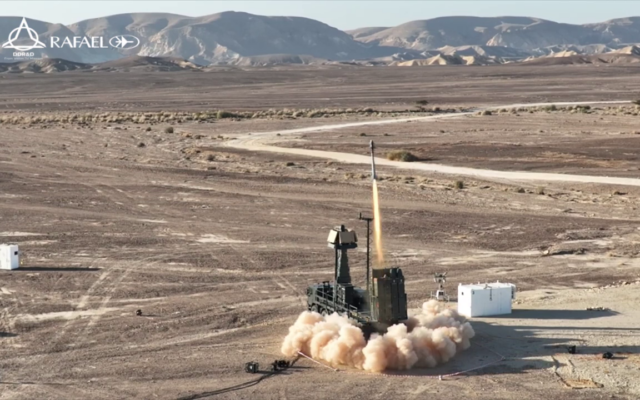Nearly six months after an Israeli man was killed by an errant interceptor missile during a Hezbollah drone attack on northern Israel, the military confirmed the rocket was fired from an auxiliary air defense system that was previously not in use by the Israeli Air Force.
On August 6, the Lebanese terror group Hezbollah fired several explosive-laden drones at Israel. The IDF said at the time that it managed to shoot down at least one of the drones.
During the attack, an interceptor missile missed one of Hezbollah’s drones and hit the Route 4 highway near Nahariya. Mikhael Sammarah, 27, originally from Kafr Yasif in northern Israel and a student in the Czech Republic, was critically wounded by the interceptor impact, and he died days later.
The Kan public broadcaster reported Wednesday that the interceptor missile was launched from the Israeli-made SPYDER short-range air defense system, which Israel exports to several countries and normally does not use itself.
According to the network, Rafael, the Israeli defense contractor that produces SPYDER, successfully tested the system against a drone eight months before the incident. Defense industry sources told Kan that the company pressed the IDF to deploy SPYDER amid the fighting with Hezbollah so it could gain battlefield experience.
However, due to time constraints, the system was rushed into service and certain deployment procedures were skipped, the report said.
Kan said that no state officials informed Sammarah’s family about the circumstances of his death and neither the army nor air force sent representatives to explain what had happened.
The IDF confirmed some of the details, saying that during the war it worked to improve its response to the increasing drone threat, and therefore began to use the SPYDER system for the first time.
“During the fighting, it was decided to procure the system in accordance with the urgent operational need, and after an operational and professional analysis,” the military said in response to the report, adding that it received all relevant approvals. and deployment was done “in an orderly manner.”
The IDF said the investigation into the deadly incident on Route 4 led to “immediate lessons” that were implemented, while the SPYDER system continued to be used.
In its own response, Rafael told Kan that it felt it was being “accused by you of exploiting the war to gain operational experience — we reject such claims with disgust, and certainly, after a period in which Rafael was recruited and worked day and night for the security of the State of Israel and its residents, without any outside consideration beyond the security of the state.”
The fighting with Hezbollah began when the Iran-backed Lebanese terror group started launching near nearly rocket and drone attacks targeting northern Israel on October 8, 2023, the day after allied Palestinian terror group Hamas led an invasion of southern Israel that killed 1,200 people, mostly civilians.
The cross-border skirmishes with Hezbollah escalated into an open war in September last year that ended in November with a fragile ceasefire after Israel destroyed much of Hezbollah’s leadership and fighting abilities.
